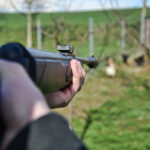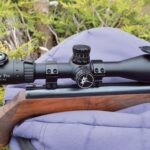Bob Jensen |
I like to go ice-fishing. And, I like to catch whatever I can catch through the ice. Walleyes, bluegills, crappies, bass…they’re all fun. But I also really like to catch perch and so do a whole lot of other ice-anglers. Fortunately, there are lots of outstanding places to catch perch across the Ice-Belt. Following are some ideas for catching perch (and most other fish) through the ice from the middle part of the ice-fishing season until the ice disappears.
You’ve Gotta Find’em
As always, first you’ve gotta’ find’em. “Pounding” is a good way to locate perch as well as walleyes. Drop your bait to the bottom, then pick it up so it’s just a few inches above the bottom. A spoon works well for “pounding”. If you have a depth-finder that enables you to see a certain zone, several of the Vexilar units incorporate this feature, set the unit so you can look at the zone just above the bottom. It’s easy to do and will really give you a good idea of what’s going on down there around your lure.
Now, on a tight line, allow the bait to fall so it hits the bottom. Do this 3 or 4 times, then lift the bait up 6-12 inches above the bottom and hold it there. The pounding action will attract any fish that might be in the area and they’ll come in for a closer look. They might eat, they might not, but at least you know that there are fish in the area. I prefer to “pound” the spoon with a tight line. If the spoon falls on a limp line, it can tangle up in the line. Fish usually don’t eat spoons that are tangled.
Presentation
If the perch are looking but not eating, you need to show them something different. Don’t change baits yet, just present it differently. Maybe move it faster or slower, but move it differently.
If the fish still don’t respond, we need to go to another color or maybe another type of bait. In the mid and latter parts of the ice-fishing season, the fish have seen a lot of baits. Try showing them something that maybe they haven’t seen as much of. Clam Tackle’s Pinhead Mino and Leech Flutter Spoons are a couple of relatively new baits that the perch have been liking. The eighth ounce size is a good place to start, but don’t hesitate to try the sixteenth ounce size if the fish don’t eat the bigger one. Go larger for walleyes. These spoons have become very popular in a short amount of time for finicky fish.
And, sometimes you have to go tiny for pressured perch or when the weather has them shut off. This is when you bring out the lightweight small stuff. My go-to setup for finicky perch or crappies has become a Sceptre light action rod with a spring- bobber. 3 pound test Floroice line is as light as I go. This size is nearly invisible, yet it’s plenty strong for most perch. A little Drop Kick or Drop Jig tipped with a spike or waxworm completes the package. I like to start with a heavier jig, but will go smaller if necessary. The spring-bobber on the rod will reveal even the lightest strike. Keep in mind, the weight of the jig will pull the bobber down a bit. If the spring-bobber goes down farther or goes up, a fish has eaten your bait.
Some of the best ice-fishing of the season is coming. If you keep these ideas in mind, your next few weeks of ice-fishing will be even more productive.
To see new and old episodes of Fishing the Midwest television, new and old fishing articles, and fishing video tips, visit fishingthemidwest.com and don’t forget to join us at Facebook.com/fishingthemidwest.











































